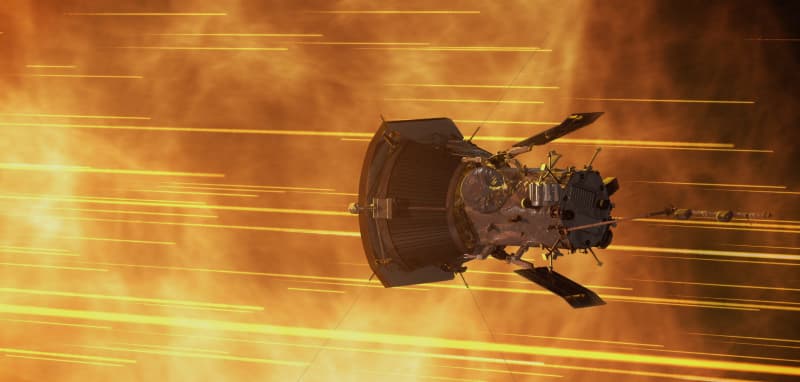
NASA's Parker Solar probe snaps closest-ever Sun images
NASA's Parker Solar Probe recently conducted its closest-ever flyby to the sun, capturing images of solar winds emanating from the sun's outermost atmosphere, the Corona. These images provide valuable insights into the sun's impact on the solar system, including potential effects on Earth.
Nicky Fox, associate administrator of NASA's Science Mission Directorate, stated that the probe's new data will enhance space weather predictions, ensuring the safety of astronauts and technology both on Earth and throughout the solar system.
The probe recorded high-resolution images of multiple coronal mass ejections (CMEs) for the first time. CMEs are significant explosions of charged particles that influence space weather. Scientists are studying how these CMEs interact and merge, which is crucial for understanding space weather phenomena.
During its close approach to the sun on Dec. 24, 2024, the Parker Solar Probe encountered unexpected switchbacks in the solar wind, characterized by zigzag magnetic fields. These switchbacks occurred more frequently than previously thought, providing new insights into solar wind behavior near the sun.
The spacecraft used various scientific instruments, including the Wide-Field Imager for Solar Probe (WISPR), to collect data as it passed through the sun's corona. The WISPR photos show both the solar wind and the corona, shedding light on the origins and effects of the solar wind in the solar system.
NASA highlights the importance of understanding the solar wind's origins near the sun, as it plays a crucial role in space weather events that can impact Earth's magnetic field. Strong solar winds can disrupt the Earth's magnetic field, leading to space weather events that affect various technologies and phenomena, such as auroras.
The Parker Solar Probe will continue its mission to gather more data during future passes through the sun's corona. The next pass is scheduled for September 15, 2025, aiming to uncover more about the origins and behavior of the solar wind.